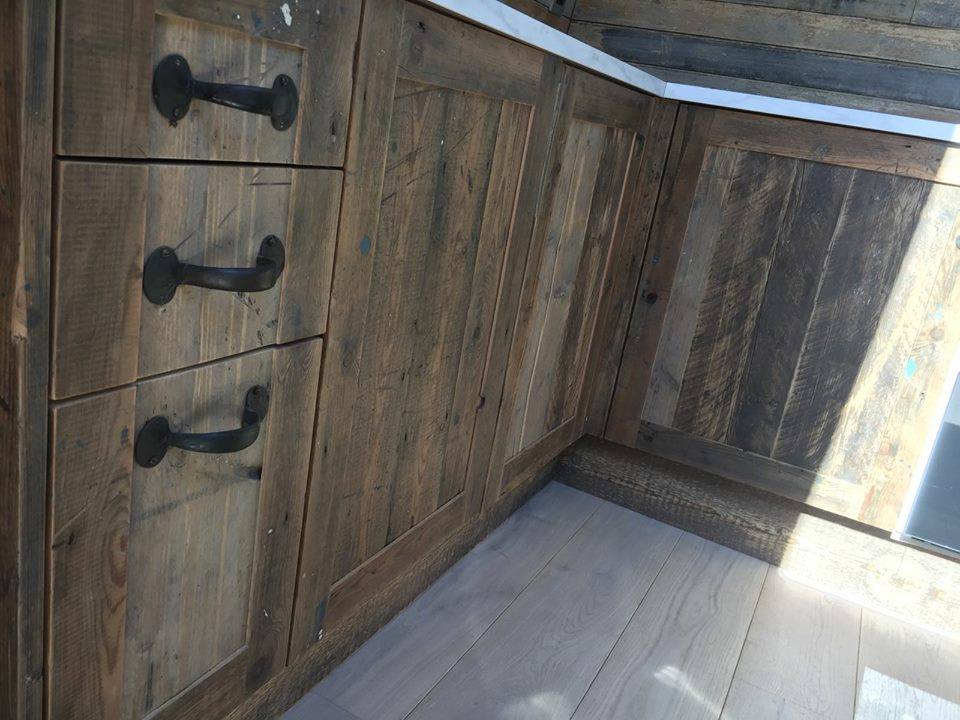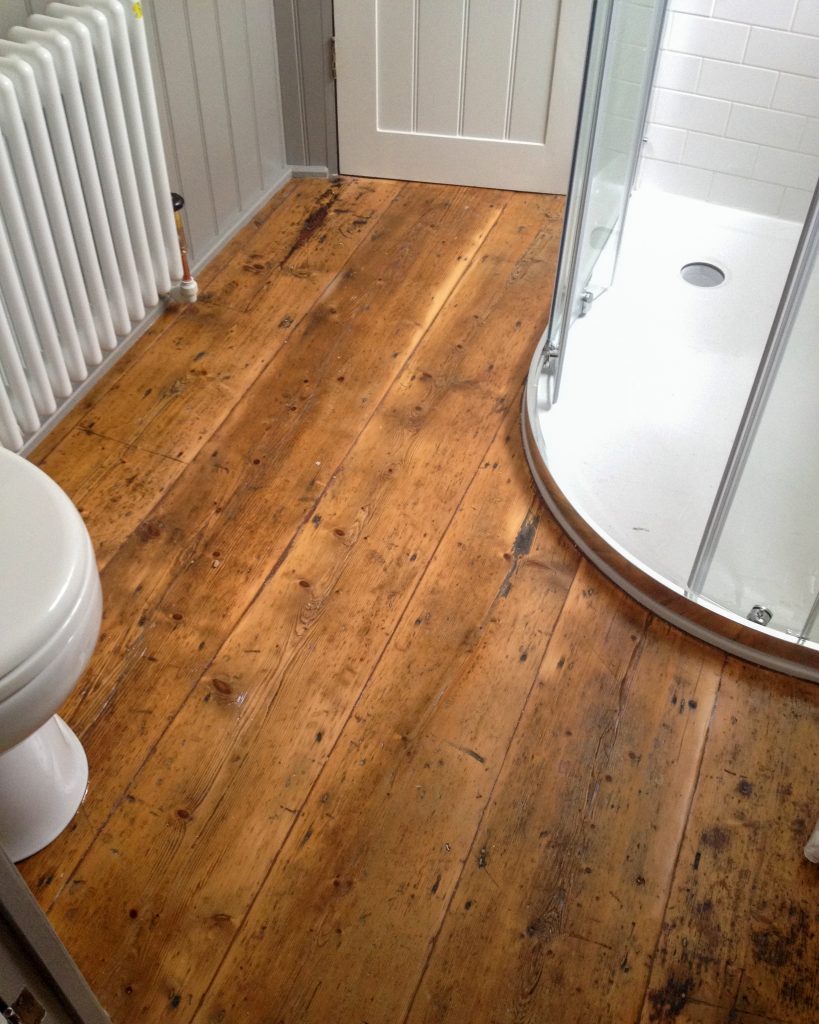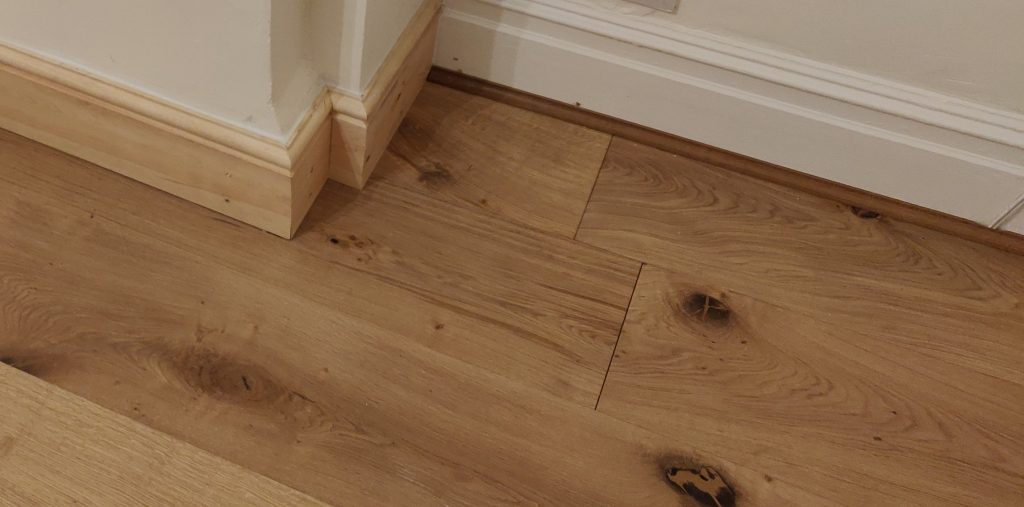We’ve been doing some nice floors recently and I thought it about time I wrote something on the subject. There’s enough to say that I will be doing two posts. This one on the types of flooring on offer, and a second on tips and tricks or laying a floor yourself
Just a quick disclaimer, as ever, that this is opinion and I can accept no liability for any choices or actions you make based upon reading this. Always defer to manufacturers recommendations. I hope you find this useful and interesting

There’s a wide range of flooring available now, retailing at anywhere from £5psm (per square metre) to over £100psm. People will swear blind that you should use this or that, that they’d never lay vinyl or that there’s no point spending £100psm on fancy wooden engineered floors. Personally, I think all floorings have a place. I’ll go through some of the common types and why you might want to use, or avoid, them
A quick thought about subfloor and underlay is probably worth a paragraph, before we move on. Most flooring suppliers will tell you what underlay you require to go with the product you are using. This may have thermal or acoustic properties, or may simply be a vapour barrier. This will go on top of you subfloor which may be solid or suspended. What (and where, e.g. ground floor/first floor) this is will impact the type of underlay. It may also be that some work to level this subfloor is required before laying the finished floor. We’ll look at this in the DIY tips and tricks flooring post
Vinyl

Hard to beat on price, comes in all sorts of finishes and if you can get an offcut (good for the small areas found in boats particularly) then you can get a real bargain. You’ll need a decent subfloor as vinyl brings little to the table in structural terms, but it’s very easy to lay (measure twice cut once though!) and gives a good waterproof layer. We’ve used it on a couple of jobs, not my favourite thing to work with but it has it’s place
Pros
- Cheap
- Wide choice of looks
- Water proof
- Easy to DIY
Cons
- Difficult to repair if damaged
- Can trap moisture
- Can look ‘cheap’
- If you cut it too small when laying it is impossible to undo
Kardean
Increasingly popular Kardean flooring, this was featuring on various boats at Crick in 2018. It’s a multi layered vinyl flooring with a high definition photo print on the top to look like stone, timber etc. Very durable and easy to lay, I’ve laid out once and it seemed decent. I did find the click lock on the product I was fiddly at times, though this can be true of other click products. It varies with brand and quality. It’s not cheap, but if you can lay it yourself then labour may balance that out.
Pros
- Durable
- Can be easy to fit
- Very Stable
Cons
- Relatively expensive
- Limited finishes and styles available
- Not much structure to it, subfloor needs to be good
Laminate

Starting at around £10psm this is also a pretty economic choice. Laid well it can look pretty convincing and there are a wide range of laminate floors available to mimic all popular styles. It is a multi layered synthetic product and has a low to middling level of durability. Typically the cheap laminates are carboard with a printed wood effect on top. Most are use a click together system for laying. If you are doing a ‘floating floor’, which most of these would be, then you need to have a reasonably flat and level sub-floor. It is not something I have ever laid in a proffesional capacity so I have no photos of what we have laid, however there was laminate on a job where we made some gorgeous reclaimed wood doors.
Pros
- Cheap
- Wide Range
- Easy to fit
- More convincing look
Cons
- Durability an issue with many
- Difficult to repair is damaged
- Soak up water and the cardboard/mdf base will swell and distort
- Generally can only be laid as a ‘floating floor’
- Thin structure is unforgiving on an uneven subfloor
Solid wood
Considered by some to be the height of quality flooring, and indeed it can be. I rarely use solid wood, for reasons I will cover, but it can be very beautiful. Prices can be as little as £20psm but can also be over £100! Oak is popular and readily available. Exotic species quickly get very expensive, though not as. We have done some lovely reclaimed floorboard floors. Be aware this is a more skilled and labour intensive way to do flooring than buying a pre prepared ‘off shelf’ product. Bamboo should perhaps be included here, but I will cover it separately.

If you are buying a ready made flooring then this will likely be tongue and groove. It can laid in various ways though I would tend to opt for a floating floor to allow for instability in the material. A decent subfloor and a good underlay are important. Glue in the grooves will stick the whole floor together in to a large floating raft.
Pros
- Attractive finish
- Generally good durability (less so softwoods)
- Can be re-finished if damaged
- Can be quite economic, some oak boards are really good value
Cons
- Can be quite expensive
- Solid wood can be unstable (boards may expand and contract)
- Harder to lay
- Needs acclimatising before being laid
Engineered Flooring
This is my main go to, along with bamboo. Especially for boats where stability is a factor. There are widely varying qualities of engineered flooring and this is reflected in the price. The best are a birch ply with a decent (4mm+) wear strip of the chosen hardwood on top. It’s this cross laminated structure (you could call an engineered floor a laminate floor, but they are generally regarded separately) that gives you such excellent stability. The best boards can cost more than their solid wood equivalent.

This stability means you have a wide choice of fitting methods with the floors; floating, glue together, glue down, hidden nail. Some can be laid straight to joists (this is true of most solid wood floors as well) if desired.
At the cheaper end of the spectrum are boards made of softwood block board with a thinner (2mm+) veneer on top. These are excellent value and can look great, but won’t be as durable in the long run. Most of the engineered boards come pre finished, oil or lacquer, though the higher end luxury/exotic veneers are often left bare for finishing after laying.
Pros
- Very stable
- Can be fitted in lots of ways
- Wide range of woods and finishes
- Can be refinished when damaged
- Generally very good durability
Cons
- Tend to be the most expensive, certainly for quality boards
- Need acclimatising before laying
- That’s about it, it’s a really good flooring!
Bamboo
Full disclosure, when I first wrote this post I’d not tried bamboo and had included it as footnote in solid floors. Since then I’ve laid, personally and as a company, quite a few bamboo floors and have come to hold them in high regard. Truth be told, it’s a frequent go to!

Price wise a good quality bamboo comes in a similar bracket to a mid to low quality engineered board. Around £30psm gets you a decent bamboo board. They are very durable, harder than oak and arguable more stand. There differences in the manufactur of bamboo, e.g. strand-woven, solid and engineered, but I won’t go into that here.
The variety of finishes and colours, these are added to the natural light bamboo colour, give it good range. It doesn’t look like wood, but I think it has a pleasing aesthetic of it’s own. There’s also the added bonus of it’s relative sustainability, though please do research this yourself if it’s an important factor to you. I’d be interested to hear people’s knowledge on this.
Pros
- Relatively economic
- Durable
- Sustainable
- Can be refinished
- Stable
Cons
- Can be fiddly cutting
- Hardness wears tools
- Definitely doesn’t look like wood (if that’s what you really want)
- Needs acclimatising
Tiles

I will cover tiles here very briefly, I write in greater length about tiling in other blogs and they really are a topic in and of themselves. Tiles are attractive, durable, stable and available in range that replicates, or is replicated, by the various other floorings covered here. We do a reasonable amount of tiled floor and it is great for boats. The main downside is that it can be a bit chilly, but this can (not so readily on boats that aren’t on shoreline, but fine for houses) remedied with underfloor heating. There are very reasonably prices electric kits available for under tile. Another downside can be cost, which may be quite high if a lot of remedial work is required before laying tiles. That said, they come in a range of budgets and can be laid DIY fairly readily
Pros
- Durable
- Stable
- Can be cheap to buy and install
- Wide range of styles
- Can be DIYed to good effect
Cons
- Can be dear
- A good subsurface is required
- Potentially chilly underfoot
Finishes
Let’s finish on finishes. This is largely solid, engineered and bank floors, you don’t want to varnish your vinyl! The finishes available on boards are likely to be as good, or better, than you can achieve yourself. It doesn’t save much to get them unfinished, it’s really the high end exotic boards that you would buy unfinished. Also, if you want a very specific finish then you might do this, but by and large you will buy finished boards. It also means you can walk on them straight away and you aren’t stuck watching varnish dry trapped in the corner of a room and unable to get out (certainly not a personal anecdote, I swear!)
With pre-finished boards you’ll often get options on board and finish. First off you can choose plain, distressed or brushed (brushed is where they brush the timber with a metal brush, it helps highlight the grain texture). Then on this you can choose an oil or a lacquer, both of which can come in a variety of sheen levels. A two part lacquer is the most durable finish, if you want to just put it down and ignore it then this is the finish for you. Oil is beautiful and is easy to reapply should the floor be showing signs of wear and tear. It’s six of one and half a dozen of the other. More durable but hard to refinish, less durable but easy to redo.
Some extra blurb
Whatever floor you choose, if you are thinking of laying it yourself then I am hoping to have a Dan’s DIY tips for flooring that I shall be publishing soon. Watch this space
I’d also like to mention that one should read price per square meter with the understanding that you’ll need more than just the boards themselves. The addition of trims, thresholds and various sundries can be 50-100% that cost again

